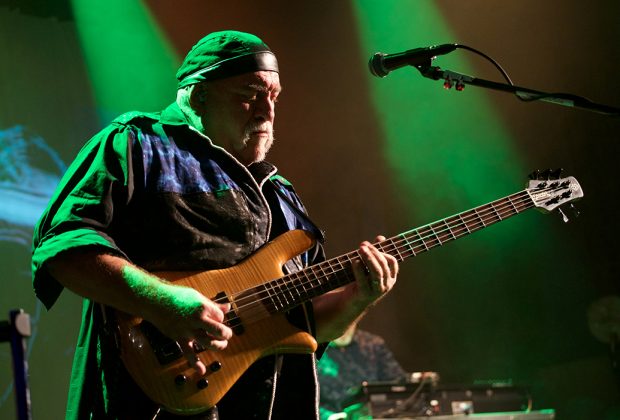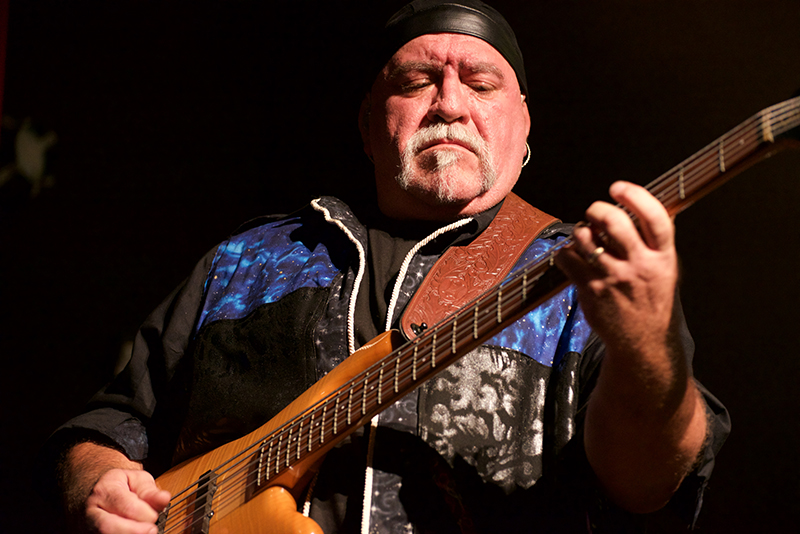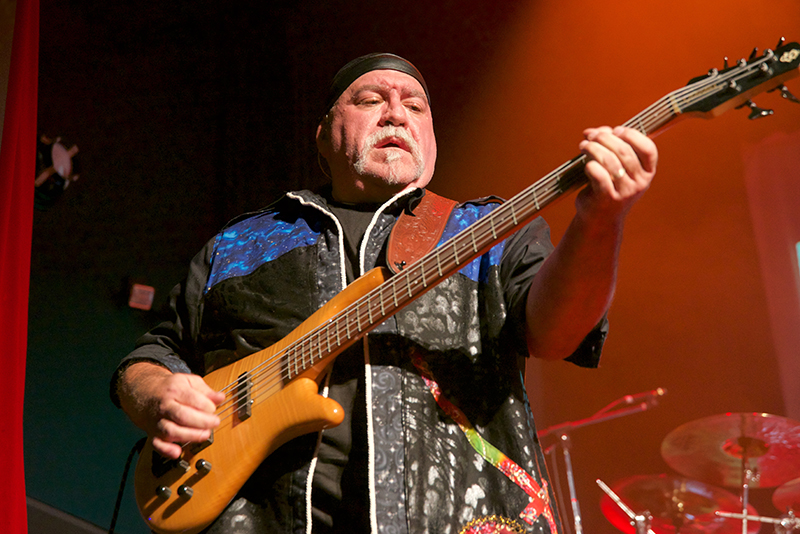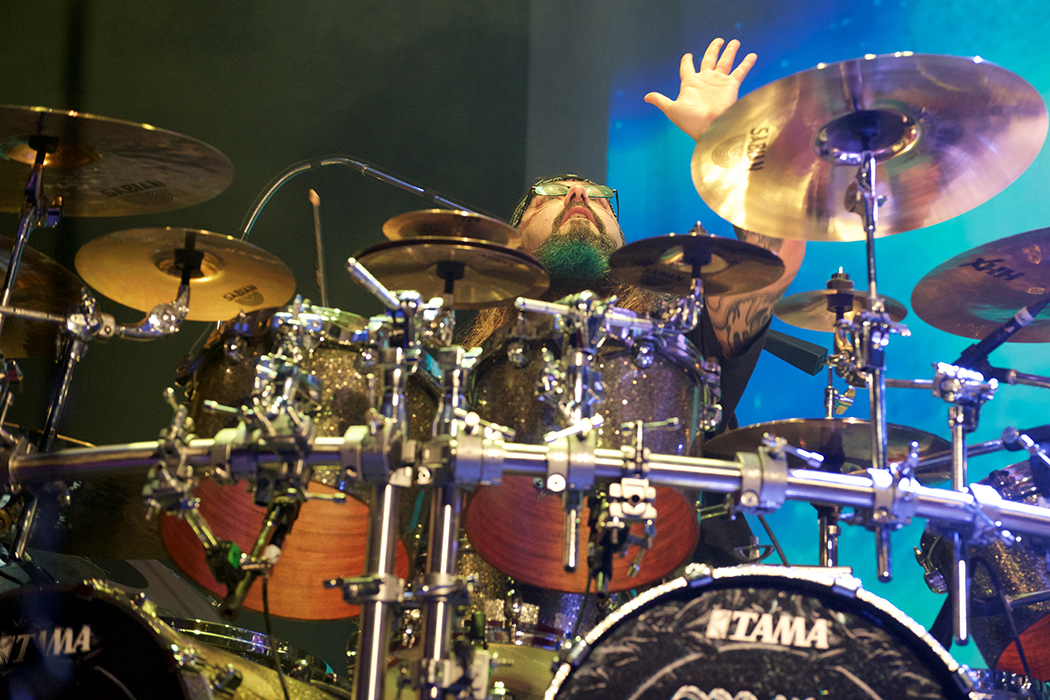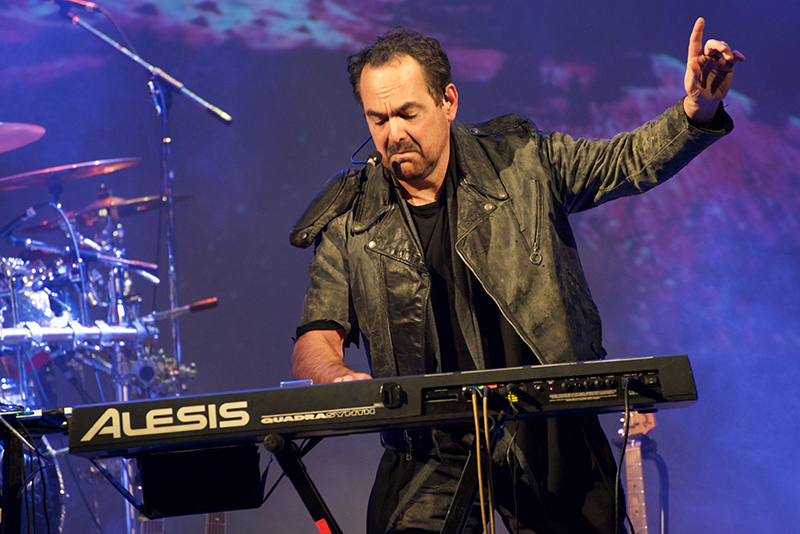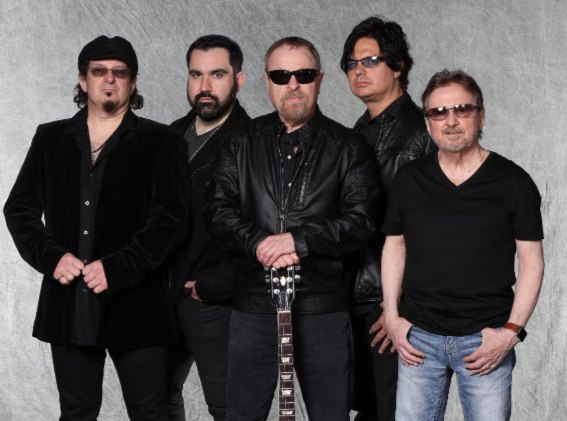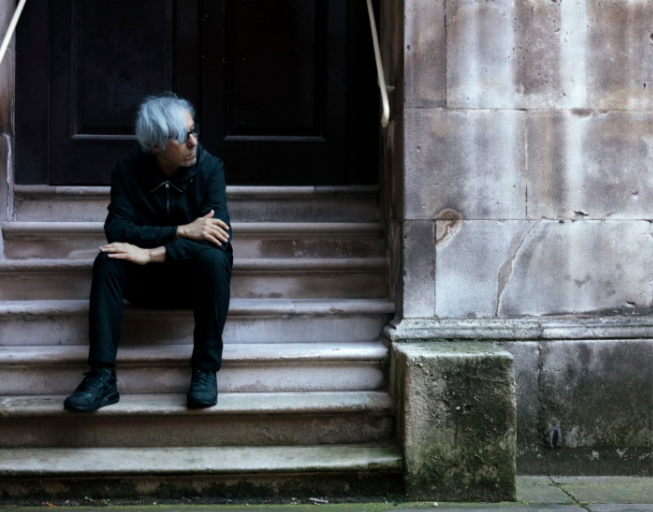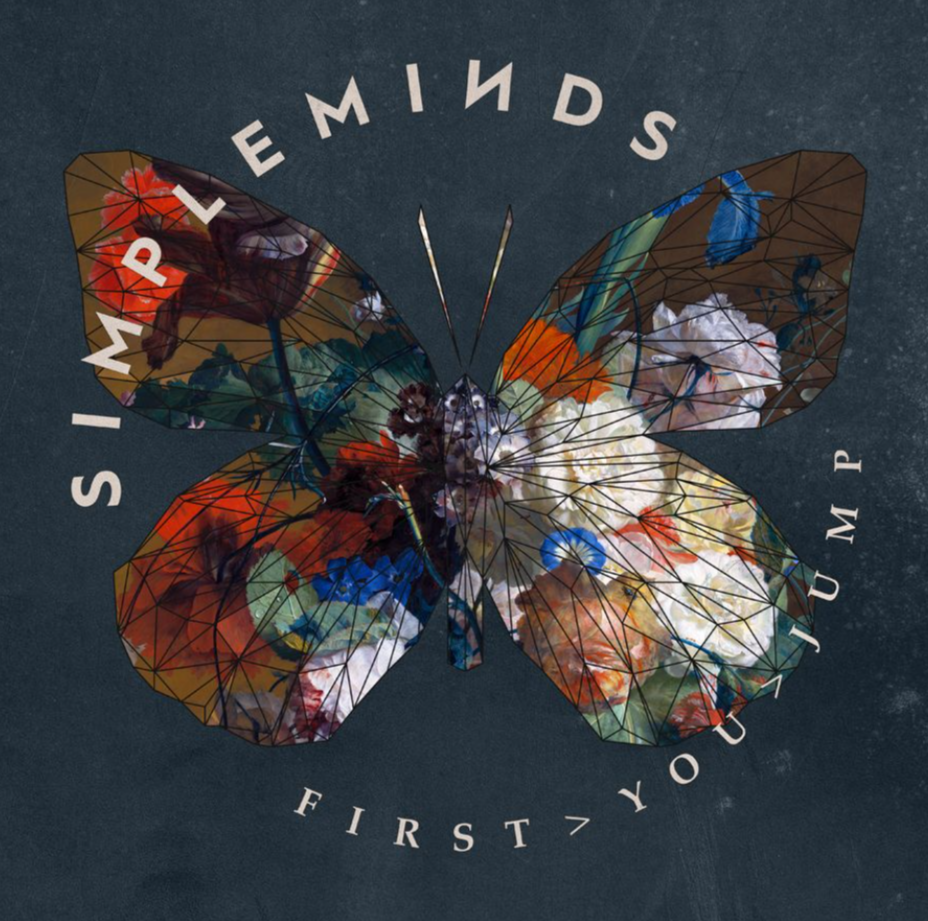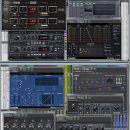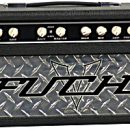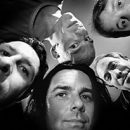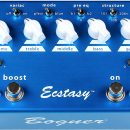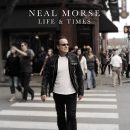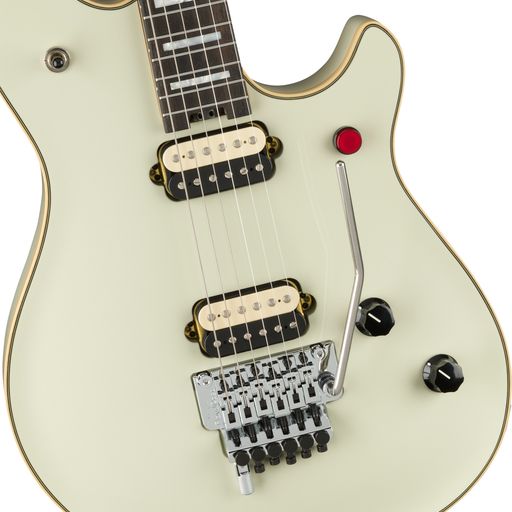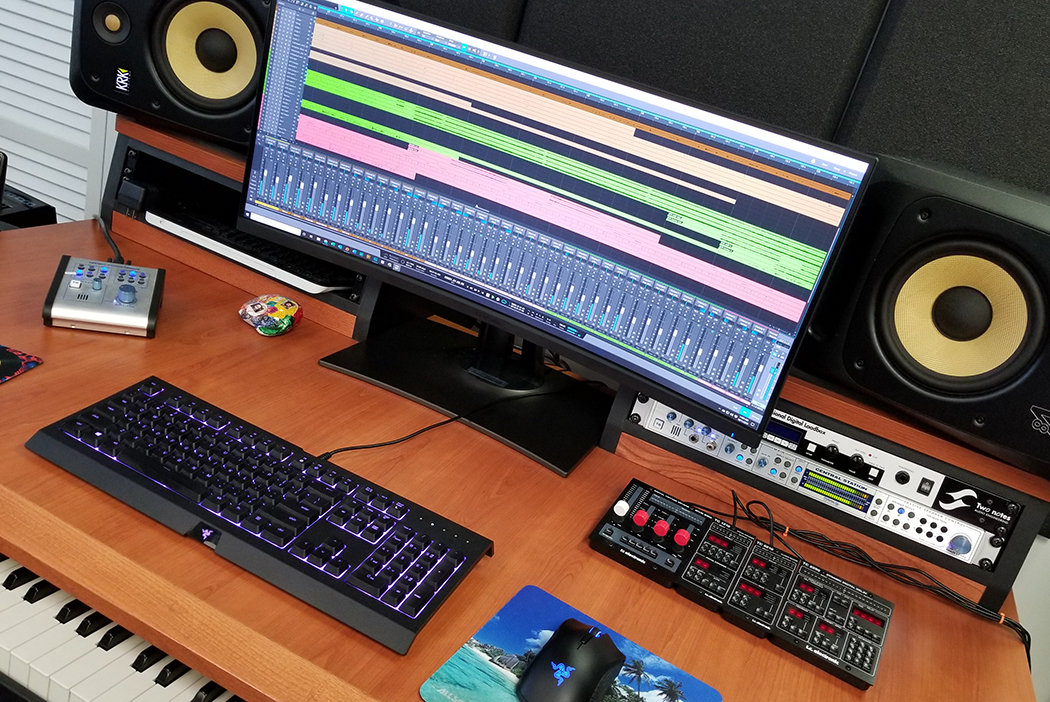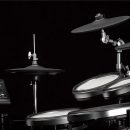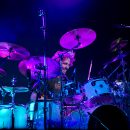With a style rooted in the classics (we’re referring to Yes, Rush, Zeppelin, naturally…), it’s not just any bass player who can lay down a formidable rhythm section lock in step with drummer Mike Portnoy. But then, Randy George isn’t just any bassist. Although relatively unknown to the masses prior to his work supporting Neal Morse, Randy has repeatedly demonstrated that he’s got both the chops and the musical sensibility to hang with the big boys of prog.
But unlike his classic influences, Randy usually employs a more contemporary tone, and he’s more than happy to add some cool bass effects when called for as well. We spoke with him a week or two before the Great Adventure tour began:
I kind of research gear a little bit to narrow it down to what I need the most, and what’s going to do the best job.
MPc: How did you get started playing with Neal Morse?
RG: Well that’s a fairly well documented story that funny enough, some of that stuff online goes away after a time and it’s hard to find it again. So I suppose I haven’t told the story in a while. Back when he announced that he was leaving Spock’s Beard and Transatlantic, I had sent him some of my stuff early on and said “Hey I’d really like to work together.” It might have even been before he made that announcement. I don’t know if he ever listened to it or not, I know how Neal is about stuff. [laughs] He may or may not have ever heard it. He may have just listened to it briefly.
I decided, once he did the Testimony thing, I just felt like, okay, I should be a part of what’s going on here. I really loved the Spock’s Beard and Transatlantic stuff. I really wanted to play that kind of stuff and I really wanted to work with those guys.
So, I got Neal’s number from somebody and I called him up cold one day. This was right about the time that Testimony had just been mixed and it was getting ready for release. But it hadn’t been released yet and he was putting together the touring band. So I called him one day and we talked about a number of different things, which included getting him on a couple of things I was doing and so forth. Of course I asked him about the tour and the band and sort of just threw it out there that hey, I can I play a lot of instruments, what do you need, you know?
He told me he wasn’t really doing auditions, but he was just sort of praying about who to get. I guess he was just trusting they would magically appear, which somehow they did. Usually it’s through word of mouth. You get a couple people on board and then they know people and they try different things.
MPc: Sure.
RG: But with me it was just, I’m just this guy that called him up out of the blue and says well, yeah, I can do it. I finally got it out of him that what we’re really looking for is a bass player. I guess at this point, I’m like, okay, perfect, that’s right up my ally.
So he sent me this Testimony stuff and I sent him the stuff I had that I wanted him to work on for me. It was all good after that. Had some subsequent phone calls. You know I heard Testimony and I was like, oh man, this is great. I’m really excited. I love this stuff. I can totally do this.
It was really just a matter of logistics after that, getting out to Nashville and being there for the rehearsal process. So that’s kind of how it happened and then it just worked out. We did the tour. I suppose really at that point, he was still just figuring out his direction and what his plan was as a solo artist. As well as, who he’s going to play with.
So when it came time to do the next one, which was just the next spring, he got Mike on board with it again and I went out to Nashville for a few weeks prior to that, while he was tracking the demos. We worked together a bit on that and I wrote a lot of lyrics for him because he had not finished all of the lyrics and so there were a lot of gaping holes in the songs.
He had the songs pretty well organized. As he was working on the demos, I was sort of just filling in lyric ideas in songs, you know, stuff for the songs. In the end, it sort of became a collaboration and then we decided to go ahead and track a couple weeks later. I went back out, Mike came out, and we put together some new stuff to go with it. Just musically, we all brought in bits and pieces that ended up being into the creation and so forth.
I guess once we did that album and got through that process fairly smooth and everything turned out so well… Neal, when he finds something that works, he sticks with it. We just kept doing it after that.
MPc: Yes, and now it looks like it’s been about 12 or 13 years together now?
RG: Sixteen.
MPc: Sixteen! I didn’t realize it goes that far back. That’s awesome! Let’s talk about The Great Adventure, which I have to say is easily the most shreddy Neal Morse Band record to date. As I understand it, you guys set out to make a very different record than this when you regrouped to work on The Great Adventure. So tell me, what it was like going in to make this record and what came out of it.
RG: Well the funny thing is when we were on tour in August of 2017... Actually let me back up just before that tour. Neal kind of felt like he’d like to just keep going; I think we should strike while the iron’s hot. Let’s just jump right into the next album. So he wanted to at that point.
To that end we decided, well, why don’t we get together for a few days and write some things and flush a few ideas out before the tour, since we all had to get there anyway. We were all there except for Mike, as his schedule didn’t allow him to get there ‘till the day... well actually, he flew in to the first show.
So, Bill and Eric, and Neal and I sat in the studio there in Nashville and worked on a few songs. I guess a couple of those ideas are in the final album, but the idea was that we would put together some stuff, just get a jump start on the writing process, and come together shortly after the tour to finish.
Somehow things just didn’t quite work out to do that as quickly. Mike had some other things at the end of the year, he was pretty busy last year. So we ended up doing it in January of 2018. Then we got together for that initial writing session at that point, which brought in those songs and sat and flushed out a whole bunch of new stuff and we essentially left with an album written but I don’t think anybody felt it had really achieved what it is we were trying to do.
At that time I think we had made conscious decision to steer away from some of the Similitude stuff. When I say Similitude stuff I’m talking about some of the other stuff that Neal had written that we hadn’t gotten to, or done yet. That’s kind of all factored into a follow-up as far as the stuff Neal had. He was kinda’ inspired to go that direction but somehow we decided, let’s try to do something different.
We put together a whole album and then we went away. I kind of felt like we’re going to have to come back and re-go through this and reorganize and rearrange some of this because it’s not really quite there yet. I think everybody felt that way.
But it was due to a lot of scheduling with Mike, because he had so many other things going on. It just took an unusual amount of time to get to a point where we could come back together on the whole thing.
Neal meanwhile had decided to go ahead and do what he felt he needed to do with it. So he came up with a whole other version of it! He took a lot of the same ideas but he just completely rewrote it into a follow up to The Similitude of a Dream. Which at that point, we didn’t know until he just sort of presented it and said look, this is where my inspiration is and so here it is.
We had some time to listen to that, absorb it, as well as the original stuff. We decided basically we’re going to need to find some time to get together and re-track this. We ended up doing it in August, we got together and just sort of took both versions of the album and we took Neal’s rewrite and said okay, this is good. There’s a lot of good stuff here, but there’s a lot of excess, so we ended up cutting a lot of stuff out.
There was stuff from the original album version that we all wanted, like “Oh, I wanted this chorus in that song” and I wanted... where Neal had maybe rewritten stuff. You know, the stuff we still want to use that Neal didn’t factor in yet. There was another whole round of making a third version of the album, is really what it came down to.
We were able to do that and get drums. Once you have drums, then you can begin to rebuild the house. The drums are your foundation and you have to know exactly what you want it to look like in the end in order for it to get built right. So once we knew we had that with the drums, it was just a matter of everybody sitting down and just basically going through and doing their part.
Once that happened, you know, there’s a few things that get moved around a little bit, but for the most part, one part comes along. Usually mine, I’m the first guy to finish bass on top of drums. Then eventually, Bill will finish keyboards. Then Neal did his stuff, mapped out the vocals. Then we get the guitar stuff in. Everybody sort of had to do it in their scheduling availability, but with a deadline in mind.
That’s the post drum tracking phase, where everybody sorta’ puts the parts together and decides, oh, you have some of this here, or we need some shakers here, or maybe Eric would sound better singing the chorus in this song. Just a lot of moving stuff around and playing with different versions of the thing ‘till you find the right balance. That’s pretty much what happened. In the nick of time, it all came together and we were able to get it delivered in time for a January release, ‘cause you’re always up against a deadline to get it out in time.
"If you want to capture a vibe, then you ‘gotta to recreate the sound."
MPc: Yeah. Tell me about the gear that you used on The Great Adventure.
RG: Well, I pretty much used what I always use. The SansAmp is a big part of it. I can get just the right amount of crunch and I’ve been using that for a long time, with Neal. It works real well. I have that and I do the track using the SansAmp. I have an Avalon U5, which is an instrument mic pre. That takes a dry signal to the track. I usually give Rich two tracks, one from the SansAmp, one from the Avalon, which is just a dry signal.
Then Rich [Mouser, mix engineer] takes the dry signal in his studio and he filters it through other compressors, he’s got a SansAmp plug-in that he uses. He’s got a combination of things that he uses on that track, to effect it, mixed in with my other SansAmp track, to get my final sound. A lot of what you hear is of the magic of Rich in the studio, as much as anything.
But the SansAmp is my primary tone. Then I have an array of effects. Now on this album, I tried to get away with not using many effects because I have in the past and they didn’t really want to just use a bunch of stuff... Neal on the other hand, he has other ideas. [laughs]
I ended up using some of the same effects: I have the Tech 21 Red Ripper, distortion peddles for fuzz and for added crunch. TC Electronic Tremolo, you know, that kind of thing. I’ve got the Boss Fender ‘59 Super Bassman peddle and that was really nice for certain things, especially if live I want to bypass the SansAmp and have more of a clean amp sound, I can switch over to that, that works really well.
The Spector is the primary bass, the 5-String Spector, that I always use. But I did use my Wilkins ‘65 P bass on one song, using flat-wound strings, to get that old Beatles, McCartney vibe.
MPc: You have to tell me which song.
RG: That’s “Vanity Fair.” You’ll hear the P bass with the flat-wounds.
MPc: Funny, that’s actually one of my favorite songs. The whole record is an amazing piece of work. But when you get to “Vanity Fair,” it just jumps out. It’s such fantastic ‘60s/’70s pop.
RG: Yeah. Well that’s why I went for the P bass with flat-wounds, ‘cause that’s the sound everybody had back then. If you want to capture a vibe, then you ‘gotta to recreate the sound.
MPc: Yeah. On songs like “I Got To Run,” I noticed you applying a vibrato or tremolo when you’re playing, especially the middle section.
RG: Really?
MPc: I don’t often hear bass players applying vibrato as a technique, so I’m really curious.
RG: Well, I do that in a lot of places. Anywhere you hear the guitar doing it and then the bass and the guitar playing the same thing, then I’m usually doing it.
MPc: Did you use your Tremolo pedal for some of that?
RG: Yeah. Which is funny because when I did that in Similitude it was foreshadowing the song, “Back to the City,” which started with that same figure and the same tremolo bass. The funny thing is I never come back to that effect later, it’s not like it’s part of the song. It’s just one of those things where Neal was like, “Yeah I want to hear that. Put that sound in.” I’m like, well, okay. I guess I will. I’m not thrilled about it but… [laughs] Because you know, there’s a great use of that tone and that really didn’t lend itself as well to it. The section did, but the way that I have to play into it, I like to be able to hit the bass pedal at the same time and it’s not possible with that. So it was like, well either Bill or Neal’s going to have to cover the bass pedal there because I can’t have my foot in two places at once.
But Neal likes to do stuff like that, and that’s fine. I’m happy to oblige if he hears something that he’d really like. I never come back to it later. It’s not a foreshadowing of a section later in the album.
MPc: Well you did come back to it. It was just a whole album later. [laughs]
RG: Well, the theme comes back. The theme that I play it on comes back a number of times. But I never play with that effect anywhere else on the album. I don’t particularly like doing that unless it’s a one-off section that has a very specific role. This was more of a, “Just do it ‘cause” sort of thing and I just don’t always go for that. Neal liked it and he wanted to do it, so I was fine. It’s no big deal.
MPc: Can you talk to me a little bit about your playing on “A Momentary Change?” That was some really awesome bass work that really stands out to me.
RG: Okay. Remind me which song that is. [laughs]
MPc: Yeah let me pull it up here…
RG: The titles aren’t right off the top of my head because I’ve actually not sat here and looked at this thing with the titles yet. When I play through it, my file is one album side or you know, the whole disk one from beginning to end. Disk two, beginning to end. I don’t have any track breaks in my album, so that I can practice playing straight through it ‘cause that’s how we play it live. It’s got natural breaks, but I took out all the track IDs. I just haven’t correlated song titles yet for all of them.
[Editor’s Note: We had this conversation before the record release and tour.]
MPc: I guess technically it’s the fourth song on the record.
RG: “Fighting with Destiny?”
MPc: Yeah. [Cues up the music and plays a bit…]
RG: Oh, that! Oh, okay. That has a name? [laughs]
MPc: Yes. That’s “A Momentary Change.”
RG: “A Momentary Change.” Thank you. I just learned something. [laughs] “A Momentary Change,” okay. You know to me, it was just that part that has [Randy hums the bass line], you know? That’s how we always talk about things. “What about that bit where it goes like this?” [hums melody] Neal will throw out the title and yeah, I guess that’s it. “Momentary Change.”
MPc: My transcriber is going to go nuts with this interview. We’ve got all these references to sounds we can’t write! [laughs]
RG: I don’t mind. I ramble, so it’s fine. Don’t make it sound like I’m such a moron. [laughs]
“A Momentary Change” was mostly Neal’s idea from, I think that was one of his bits in his rewrite. So in the second rewrite of the album when Neal did his version, he put that section in.
Of course it’s keyboard lines. [Randy sings some great fake keyboard melody lines] But, you know, he writes it on keyboards and then says, oh yeah guitar and bass should play this, too. It ended up being pretty cool. It wasn’t as hard to play as I thought it was going to be at first. But it is very cool. There’s a section, as a matter of fact, you can see a little bit of this in the making of video, where he, you know, wanted that fretless bit. There is a little bit of fretless in that.
He’s like ,“Yeah I want the fretless to come in.” He’d sing the line. He’d just sang that [Now Randy’s singing bass lines to us. How do you write this stuff down? Lol], you know. He just sang the line that the fretless played and so I said, okay. Now that you know what the line is I’ll just plug that in on the fretless when I do my tracking and so forth.
MPc: What kind of fretless do you play?
RG: I have a Lakland 5-string fretless.
MPc: Do you consider yourself a gear junky?
RG: Kind of. There’s a lot of gear I’d love to have, but the thing about the gear junky thing, so to speak, is that I’m not necessarily looking for all the gear. I like to know what stuff does. But I zero in on the things that really stand out and work, especially for me.
There’s a couple of new items that Tech 21 has that I’m going to have to pick up because I want to try them both. I see new gear coming out all the time, but I’ve used enough of it and been around enough to know that it’s easy enough to gravitate to gear to play with it and stuff. Is it really going to be something that you use and if you do use it, what is it really bring to your musical world?
I kind of research gear a little bit to narrow it down to what I need the most, and what’s going to do the best job. I have an AX8, Fractal AX8. Then there’s the Line 6 Helix, which is another... They’re both guitar stomp boxes. It’s like well, I think the Helix sounds like it’s a pretty cool unit, too. I don’t think it’s better than the AX8, it might sound reasonably as good, I don’t know. But I get everything I need out of the AX8, so I’m not really looking for something to replace. I’m not looking for something better.
MPc: Yeah.
RG: With the Tech 21 stuff, they just expanded the SansAmp that I’ve always used and my biggest beef with the thing is that it didn’t have much mid-range control. Now they’ve added mid-range control to my particular unit, so that’s great. That’s a piece of gear that I want to try and see what it does. See if it changes things for me in a way that it would make it something that I would use and talk about.
MPc: Yeah. Tell me about the rest of your rig.
RG: So, you know, I don’t really carry around a rack. I’m not worried about the amplification. We carry around an Ampeg SVT-4 Pro, with a 4x10 cabinet. I just plug my pedal board, the output of my pedal board goes to the amp. Splits off to the front of the house. What goes to front of house comes right out of my pedal board. It doesn’t come out of the amp. The amp is just for stage feel.
MPc: Gotcha.
RG: I’m using in-ear monitors, so if the amp suddenly died—and it has, I wouldn’t even know it.
MPc: What in ear monitors do you like to use?
RG: I have a pair of Ultimate Ears UE 11s. They’re very nice and they work pretty well for me. I destroyed them at one point because I think after a few years of touring with them, the sweat probably made the plastic all crack and brittle, especially where the little wires connect.
At the end of the European tour on Similitude, I started to have one ear going in and out. I sent them back though to Ultimate Ears and said “Help. These need fixing” after the tour. They turned around and sent them right back to me and they were like brand new. They weren’t a new pair, they were the same pair. But they somehow remolded the plastic and they were like new again. It was crazy. They’ve worked real well. I’ve got deals with others, like JH Audio, but you know I don’t really need another set of ears. Not at this time. I don’t know, I don’t know if I would try a different brand of ears. I’ve been happy with the UE 11s.
MPc: It’s definitely one of those things where artists are really curious to know what each other is using because with custom molded in-ears, you can’t just randomly try a pair and send it back and try someone else’s.
RG: Yeah. It perfectly seals out everything. That’s why I said, I don’t even hear the amp on stage. I mean, because my amp monitor is just the same feed that’s going to front of the house. We mic the amp, he mics it for front of the house. He adds a little bit of midrange that he gets through a mic in the front house speakers, but we never use it. When you hear a live album it’s the direct feed that you hear, that gets mixed.
The amps, they’re kind of becoming obsolete in one respect. I think it has a lot to do with what kind of music you’re playing. Really, progressive rock has been the most tone intensive type of music because they use so much experimentation across the board just to play different styles that people employ in progressive rock.
As guitarists it might be a different thing, but even Eric Gillette has the same thing with the AX8. What you hear is coming directly out of the AX8. It’s not really a mic on an amp. The amp isn’t a terribly critical part of the sound.
MPc: You’ve played with a wide range of musicians on quite a few diverse sounding recordings. Outside of the Neal Morse Band, and before that the [Ajalon 00:31:38] Record, who were some of your other favorite drummers and guitarists to play with?
RG: I don’t know. Outside of the Neal Morse Band, yeah there’s been a few. Rick Wakeman released our first CD for us in Ajalon. He played on the second CD and that was a lot of fun having him. Phil Keaggy. I’ve done a lot of stuff with Phil Keaggy outside the Neal Morse Band.
You know, I think the biggest thing I’ve learned from doing that is that sometimes you can get what you want out of those guys ‘cause you think they’re going to do a certain thing and what not. You say, “I want that sound,” you know, Michael
Manring, I’d do the same thing. ‘Cause the sound he gets, that’s the sound I want in this song. So you get him to do it. And it’s great!
Some people are really good at just coming up with their parts and doing it. Phil Keaggy’s really great at that. So is Michael Manring. Rick Wakeman gave me exactly what I asked for as well.
It doesn’t always work out as well as you think because sometimes you get it and you think, that’s weird. Why did he choose that note instead of this note? That seems really obvious, you know?
You just never quite know how somebody else is going to hear and interpret what you do. So it’s great when you play with guys who just have that natural insight and natural instinct to hear what’s going on in the music and respond to it.
MPc: What about a drummer? Outside of Mike Portnoy.
RG: Outside of Mike. Well I love playing with Nick. I love playing with Jimmy Keegan. Nick D’Virgilio. They’ve both been really good. My drummer, Dan Lile, from Seattle, in Ajalon. He was a great drummer. Scott Connor, who I’ve worked with recently in the Steppes, which was my Steve Hackett tribute. Scott’s really good. I enjoyed playing with him a lot. There’s a lot of good drummers around. There’s a lot more I’d like to work with, too. I’ve played on tracks with Marco Minnemann and Chad Wackerman. Both are exceptional drummers. Yeah.
MPc: My last question. What would you like people to know about the new record that might not instinctively come up in an interview like this?
RG: I don’t really know if there is anything I can say other than that in order for us to continue to do this, you know, we really need people to come to the shows. You know, touring is the only place we can really make any money. It’s tough to fill up venues these days. People have more and more reasons not to go out, but our fans have been really loyal.
But we want to increase that. There’s a lot of people, I think, that would really enjoy what we’re doing that just don’t know who we are. That’s what it always boils down to. If there’s anything, it’s please get your friends to come to the shows. Support the shows live because that’s in a lot of ways, that’s the only way we can survive as a band.
It’s never quite the same twice. The band’s interpreting the music to be played in a fashion that we couldn’t conceive of without having recorded the album first, learn the album, gone back in the studio, rerecorded us playing it live.
In the old days, bands used to rehearse the album and they’d rehearse the songs and they’d have the live performance together before they ever went in the studio. We don’t have that luxury anymore. So, the live shows offer something unique. A lot of times the band approaches the material a little more organically. So there’s another slight level of development that happens so that it becomes doable live, but it also it’s the combination of the musicians actually taking it, recreating it.
So new things happen all the time without necessarily reinventing the wheel. It’s just a different thing and that’s why we put out the live DVDs so people get a taste of what it sounds like live. It sounds a lot like the album because pretty much each guy is going to pretty much do the same thing. It’s just different when the band interprets it. Every night it’s a little different. Some nights are going to better, that’s the way it always is. At least, from our perspective.
All photos © 2019 Scott Kahn/MusicPlayers.com.

